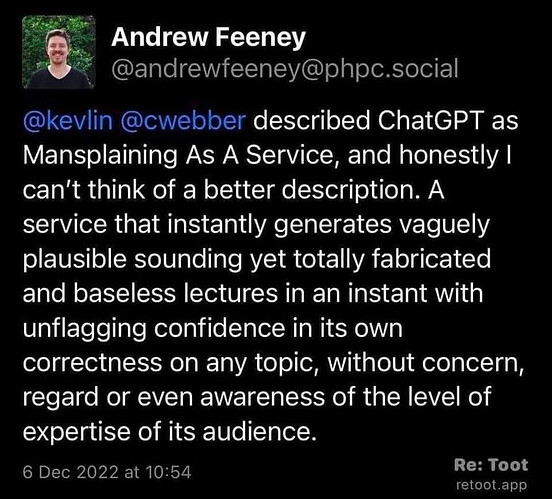So I’m a split decision on if it’s beneficial or not.
But I will weight in, with respect to my “paying” gig in IT. So far, “AI” is failing to adjust alarm thresholds for monitoring both performance and security, in the real world. Of course the expectations are “it’s right around the corner” from management. And of course everyone’s sales and marketing group “claim” they have it today. And yet, every time we put it into a “real world” environment, instead of someone’s demo lab, well… I guess I should only say it falls a bit short (so I don’t make myself sound like a skeptic or negative person).
Considering so much of my time is involved “tuning” performance monitoring, and I’m involved in more security conversations that I should be, I should be excited about it. Yet I’m not sure if I will benefit from it during my career, at least in respect to IT monitoring. Keep in mind I’m one of two people that developed a in-house solution to get alarms into a ticketing system, that runs circles around anything available on the market today. So it’s not that I’m anti-automation. (My involvement cost some people their jobs, even though I had to, because we couldn’t count on them to do their job).
My personal observation as I get closer to the end, is that there’s a lot that I have or see today, that I wish I had access to as a younger person. And yet I question if I would have the same level of skill sets, or would I not be as skilled at doing things myself, if these things were available to me at a young age? Most of our “new employees” seem to lack logical/critical thinking. Not sure which is the better label. Simple example is if they can’t get the GUI to work, they don’t know that CLI is an option. I can’t prove it, but if they knew, and got to it, I’m not sure they would know what to do in CLI.
Of course I also remember the same fears, thoughts, ideas about robot arms on assembly lines in Michigan, robot use in warehouses, etc. So to me it’s the same conversation with different variables.
But now I feel like I’m climbing up on a soap box, or yelling at kids to get off my lawn. So although point and click helps get things quicker and cheaper, when things go wrong and point and click doesn’t work……
But this is more philosophy or opinion, not trying to state right or wrong, just my observations in my not very long life on this planet.
For anyone that read this through this far, bless you, and thanks for your time.
